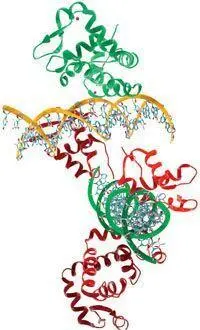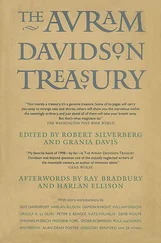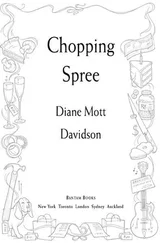Dr Michael Tomasello is the Florida-born co-director of the Max Planck Institute for Evolutionary Anthropology in Leipzig, Germany. He divides his time between their spanking new building near the university and Leipzig zoo’s splendid open-plan primate enclosure.
Tomasello’s studies with the great apes and how they communicate and interact socially with each other have expanded in recent years to the observation of children and how they acquire language. His findings amongst the apes and children have led him to reject the idea of a language gene or a human instinct for language. He is at odds with the likes of Noam Chomsky, arguing that human language evolved out of a need for social interaction. ‘Human communication is a fundamentally cooperative enterprise,’ he says, and the first signs of this communicating which you see in young children are the two basic types of human gesture: pointing and pantomiming. Pointing is arguably the most fundamental type of human gesture. Tomasello describes this scenario: You’re standing in a line. The line has moved forward, and a man hasn’t noticed because he’s talking to the person behind him. Someone from still further back points him to the newly opened space. There’s a universal understanding of what is meant by the pointing: ‘Hey, there’s a space. Move up!’ Tomasello illustrates the other type of basic human gesture, pantomiming, or signing for the imagination, as he calls it, with another scenario: You’re at the front of the lecture hall, ready to give a lecture. A friend in the audience fiddles with her shirt button, frowning at you. You look down at your own, and, sure enough, it’s unbuttoned. Tomasello argues that these simple gestures are actually a form of complex communication; our pointing and miming to each other is a kind of cooperation that is unique to humans.
Experts call this shared intentionality or recursive mind reading . In simpler terms, it’s a sort of unspoken shared goal to collaborate, an awareness of what the other person is thinking. For instance: We’re sitting beside each other; I’m looking at a book on the table; you’re looking at the book; I know that you’re looking at it and I know that you know that I know. Apes apparently don’t think like this. The theory is that conventional languages — first signed and then vocal — developed from these natural gestures of early man. Language evolved because humans needed it to survive and prosper; they needed to be able to do more than gesture — to organize themselves, to pass on knowledge, to gossip, to plan. Tomasello doesn’t reject the idea that the ability to speak, to produce sounds that apes can’t articulate, may be genetic, but he argues that the reason we evolved speech was to allow us to communicate more effectively — so the communication, the awareness of shared cooperation, was already there.
Man’s first language, according to Tomasello, would have been a signed one. It’s the natural progression from pointing and pantomiming. He explains it with another scenario. Imagine two groups of children who have never communicated with anyone. Each group is isolated on its own desert island, one group with their mouths covered with duct tape, so unable to talk, the other with their hands tied behind their backs, so unable to gesture. We know what would happen with the first group, because it’s what happens to deaf children who are brought up in families where no one knows sign language. When these children come together they develop a sophisticated sign language with grammar and syntax. We don’t know what would happen with the children whose hands have been tied, but Tomasello thinks it unlikely that they would have been able to invent their own structured vocalization. They might have emotional responses — screams, howls, etc. — and be able to mimic sounds, like apes, but their sounds would not be language.
Looking at how children develop allows you to witness how, through the awareness of shared cooperation, they quickly move from gesturing to talking. In evolutionary terms could they be at the stage that early man was? And if so, what propelled the pointing early man to make that leap forward to fully fledged language? Well, it would have been an immense evolutionary advantage for a group to develop the speech skills necessary for the creating and passing on of knowledge. Whether it was language itself or other cognitive functions that propelled homo sapiens forward is one of those chicken-and-egg questions that keep recurring
FoxP2 — the Language Gene
The Holy Grail for those who argue that humans are born with an innate language ability must surely be scientific proof that we are genetically wired to communicate in a way that no other animal is. Scientists now believe they’ve found the answer — well, part of the answer — with the discovery of a so-called language gene. In London in the 1990s, a family known simply as the ‘KE family’ came to the attention of researchers at Oxford University. Over half of the thirty-seven family members, extending over three generations, were born with severe speech and language difficulties. They struggled to speak grammatically correct sentences and they couldn’t move their tongues or jaws properly when they tried to speak. When the researchers examined the unaffected members of the family as well as the affected ones, they identified a single gene as the apparent cause of the speech problems. The FoxP2 gene, which stands for Forkhead Box Protein P2, is a transcriptional regulator — in layman’s terms, it switches genes on and off during the creation of a body’s tissue. All the members of the KE family who had speech problems had a damaged FoxP2 gene. As further evidence, the researchers identified a boy, known as CS, who was unrelated to the KE family but had similar speech and language problems. He too had the faulty FoxP2 gene.

FoxP2 gene (Forkhead Box Protein P2) ‘the Language Gene’
Human FoxP2 appears to affect tissue growth in the brain, giving us the ability to shape very precisely the sounds we make with our mouths. Two copies of the gene are needed, one from the mother, one from the father. A fault seems to have developed at the embryo stage of those members of the KE family with speech problems. They had only one copy of the gene, and this fault distorted the normal genetic sequencing required during the early development of the regions in their brains associated with speech and language.
So does this mean humans are the only species with the FoxP2 gene? Have Chomsky et al. been proven correct? Well, no. The gene has been identified in all mammals. In fact, the only difference between human FoxP2 and chimp FoxP2 is two amino acids; with mice, it’s just three. FoxP2 affects birdsong: zebra finches are just seven amino acids away from humans. If you take away the gene, the birds can’t learn their songs. It’s even thought to help bats with echo location. What researchers now speculate is that those two amino acid differences between humans and chimps led to the evolution of language in humans whilst chimps remained language-less. FoxP2 was not necessarily the gene which gave humans language, but it certainly influenced humans’ ability to speak, enabling anatomical changes such as the lowering of the larynx and development of fine motor movements of the mouth and the lips.
In the labs at the Max Planck Institute in Leipzig, scientists have been working with mice to calculate at what point in evolution the specifically human version of the FoxP2 gene developed. Dr Wolfgang Enard believes that human FoxP2 developed 120,000 to 200,000 years ago, at roughly the same time as the emergence of homo sapiens . A variation in the gene of just two amino acids could have spread through the generations to the entire human population. The genetic sequencing of Neanderthal Man has now been completed and, rather thrillingly, he too had the same FoxP2 gene as homo sapiens . This doesn’t mean that 30,000 years ago (before they died out) Neanderthals were enjoying their version of a Homeric epic round the fire, but, according to Dr Enard, it does suggest that they may have communicated with a more elaborate system of grunting than first thought. The discovery of a hyoid bone in a recently uncovered Neanderthal skeleton, crucial in the vocal apparatus of homo sapiens , means there’s no reason why they should not have been competent linguists. But we’ll never know for sure. What is certain is that the mapping of the human genome is in its infancy. Dr Enard reckons there could be anywhere between 10 and 1,000 language genes. ‘This is hopefully the first of many language genes to be discovered,’ says Enard. ‘It is compatible with the hypothesis that language could have been the decisive event that made human culture possible.’
Читать дальше













